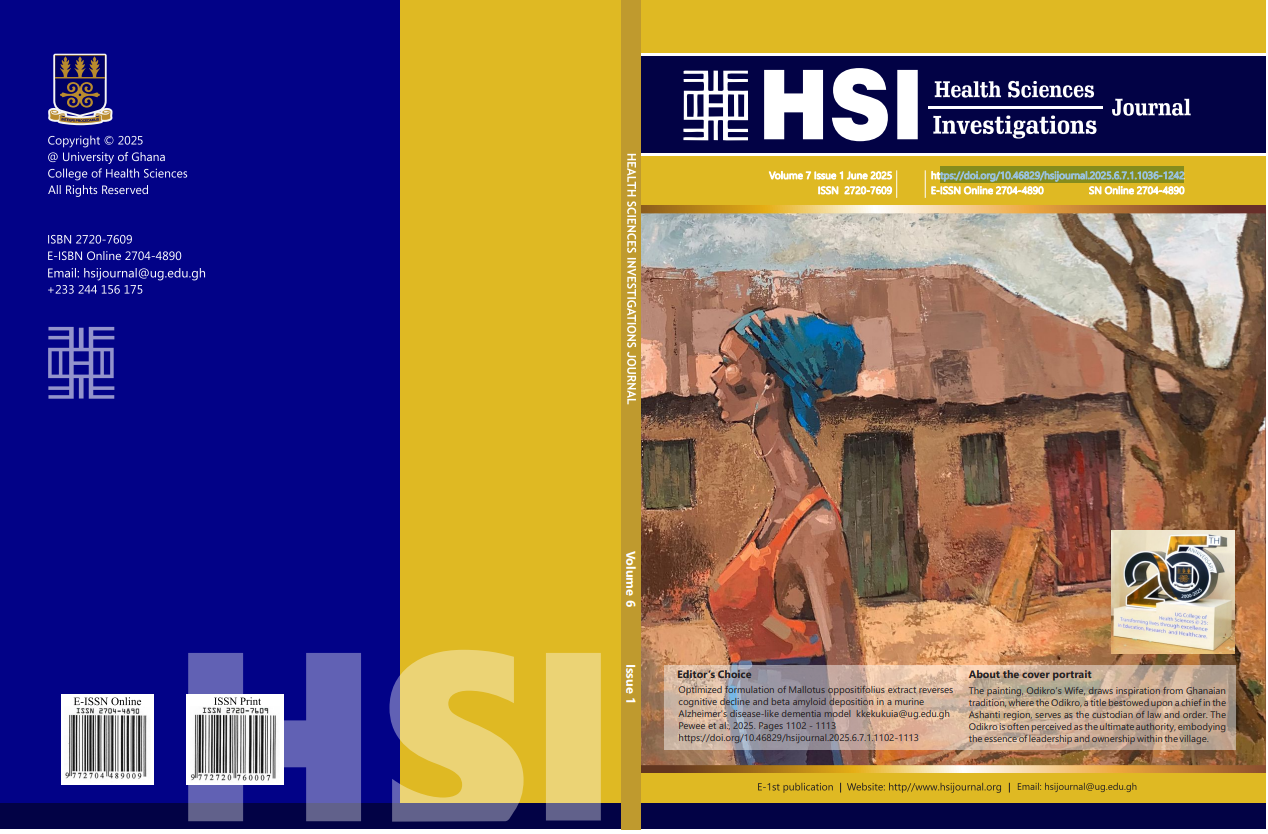Efficacy of anthropometric measures in predicting hypertension among adult Ghanaians: A community based cross-sectional study
Efficacy of anthropometric measures in predicting hypertension among adult Ghanaians
Abstract
Background: As global rates of hypertension continue to rise, especially in developing countries, there is an urgent need for effective screening tools. Anthropometry offers a practical approach to assessing the risks associated with hypertension due to its simplicity and cost effectiveness.
Objective: This study aimed to evaluate the efficacy of waist circumference (WC), waist-to-hip ratio (WHR), waist-to-height ratio (WHtR) and body mass index (BMI) in predicting hypertension among adults in the Cape Coast metropolis in Ghana.
Methods: This analytical cross-sectional study involved 390 adults from three local communities. Anthropometric data were collected usingstandardised equipment, and hypertension was defined based on the WHO blood pressure classification. The validity of the anthropometric measures was assessed using positive predictive value (PPV) and negative predictive value (NPV), as well as specificity and sensitivity. IBM
SPSS version 26 was used for statistical analyses. Chi-square and linear regression models were used to determine the associations between anthropometric measures and hypertension.
Results: Among 390 participants (mean age: 34.6 ± 13.8 years; 50% female), WC and WHtR were significantly associated with hypertension (WC: β = 0.256, 95% Confidence Intervel [CI]: 0.173 - 0.445, p = 0.011; WHtR: β = 0.310, 95% CI: 0.210 - 0.458, p = 0.024), whereas body mass index (BMI) was not (β = 0.034, p = 0.466). WHtR demonstrated the highest sensitivity (88.4%), while WC had the highest specificity (81.7%) for predicting hypertension.
Conclusion: This study highlights the importance of WC and WHtR as valuable and effective anthropometric measures for predicting hypertension in a clinical setting. Incorporating these measures into routine health assessments could enhance the early detection and management of hypertension, thereby contributing to better public health outcomes. Further research is needed to confirm these findings in diverse populations and longitudinal studies.


